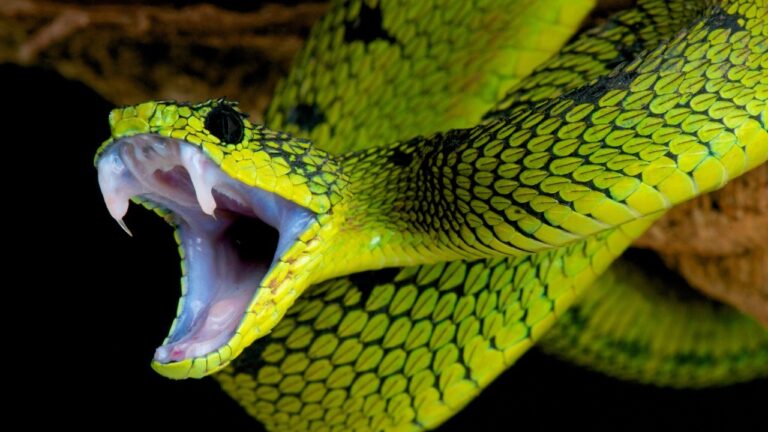Snake Kidney Disease: A Guide to Specialized Health Conditions
Overview of snake kidney disease
Snake kidney disease is a specialized health condition that can affect the renal system of these fascinating reptiles. As with any living creature, snakes are susceptible to a range of health issues, and kidney disease is one of the most common ailments they may encounter. While it can be a serious concern for snake owners, understanding the causes, symptoms, and treatment options can help mitigate the effects of this condition and ensure the well-being of these slithering companions.
The kidneys play a vital role in a snake’s overall health and well-being. They are responsible for filtering waste products from the blood, regulating fluid balance, and maintaining electrolyte levels. When the kidneys are compromised by disease or dysfunction, it can have far-reaching effects on the snake’s entire body.
Snake kidney disease can be caused by various factors, including infectious agents, genetic predisposition, and acquired conditions. Identifying the underlying cause is crucial for determining the appropriate treatment plan. Early detection and intervention can significantly improve the prognosis for snakes with kidney disease.
In this comprehensive guide, we will explore the different types of snake kidney diseases, discuss their causes, symptoms, and diagnostic methods. We will also delve into the various treatment options available, including medications, dietary modifications, and environmental adjustments. Additionally, we will provide essential tips on preventing snake kidney disease through proper husbandry, regular veterinary check-ups, and maintaining hygiene and sanitation.
Whether you’re a seasoned snake owner or a newcomer to the world of reptile companionship, this guide is designed to equip you with the knowledge necessary to navigate the complexities of snake kidney disease. By understanding the intricacies of this condition, you can take proactive measures to ensure the health and longevity of your scaly friend.
So, let’s embark on this enlightening journey through the intricate world of snake kidney disease and discover how we can provide the best care for these remarkable creatures.
Understanding Snake Kidney Disease
Snake kidney disease is a specialized health condition that affects the renal function of snakes. It is important for snake owners and enthusiasts to have a comprehensive understanding of this disease in order to provide the best possible care for their reptilian companions. In this section, we will delve into the causes, symptoms, diagnosis, and testing methods associated with snake kidney disease.
Causes of Snake Kidney Disease
There are several factors that can contribute to the development of snake kidney disease. One of the primary causes is infection, which can be brought on by various pathogens such as bacteria, viruses, or parasites. These infectious agents can invade the snake’s kidneys and disrupt their normal functioning.
Additionally, hereditary factors play a significant role in the development of snake kidney disease. Certain genetic mutations or abnormalities can predispose snakes to renal issues. It is crucial for breeders to carefully select breeding pairs to minimize the risk of passing on hereditary kidney diseases.
Another important cause of snake kidney disease is acquired conditions. These can include factors such as poor husbandry practices, improper nutrition, exposure to toxins, or underlying health issues. It is essential for snake owners to maintain a clean and suitable environment for their pets to prevent the development of acquired kidney diseases.
Symptoms and Signs
Detecting the presence of snake kidney disease can be challenging, as symptoms may vary depending on the severity and underlying cause of the condition. However, there are certain signs that snake owners should be vigilant about.
Some common symptoms of snake kidney disease include excessive thirst and increased urination. Snakes may also experience weight loss, lethargy, and a decrease in appetite. In more severe cases, snakes may exhibit swelling or puffiness around the kidneys, which can be felt during a physical examination.
It is important to note that these symptoms can also overlap with other health conditions, such as snake scale rot, snake mouth rot, or snake mites infestation. Therefore, it is crucial to consult a reptile veterinarian for an accurate diagnosis.
Diagnosis and Testing
To diagnose snake kidney disease, veterinarians employ various diagnostic techniques. One common method is through blood tests. These tests can help identify any abnormalities in the snake’s blood chemistry, such as elevated levels of certain substances or decreased kidney function markers.
Urinalysis is another valuable tool in diagnosing snake kidney disease. Analyzing the snake’s urine can provide insights into the health of their kidneys, as well as detect the presence of any infections or abnormalities.
In some cases, veterinarians may also recommend imaging studies, such as ultrasound or radiography, to visualize the snake’s kidneys and assess their condition. These imaging techniques can help identify any structural abnormalities or tumors that may be contributing to the kidney disease.
It is important for snake owners to work closely with a reptile veterinarian to determine the most appropriate diagnostic tests for their snake. Early detection and accurate diagnosis are crucial in managing snake kidney disease effectively.
In the next section, we will explore the different types of snake kidney diseases, including infectious, hereditary, and acquired conditions, shedding further light on this complex health issue. Stay tuned!
Click here to read about snake mites treatment
Types of Snake Kidney Diseases
When it comes to snake kidney diseases, there are different types that can affect these reptiles. Understanding these various types is crucial for snake owners and enthusiasts, as it helps in identifying and managing the health conditions that may arise. In this section, we will explore the three main categories of snake kidney diseases: infectious, hereditary, and acquired.
Infectious Kidney Diseases
Infectious kidney diseases in snakes are caused by a wide range of pathogens, including bacteria, viruses, and parasites. These pathogens can infiltrate the snake’s kidneys, leading to inflammation, dysfunction, and potential long-term damage. Some examples of infectious kidney diseases in snakes include snake septicemia and snake inclusion body disease.
Snake septicemia is a severe bacterial infection that can affect the kidneys, among other organs. It is often characterized by symptoms such as lethargy, loss of appetite, and difficulty breathing. If left untreated, snake septicemia can be fatal. On the other hand, snake inclusion body disease is a viral infection that primarily affects the central nervous system but can also impact the kidneys. It is known to cause neurological disorders and can be transmitted through direct contact with infected snakes or contaminated equipment.
Hereditary Kidney Diseases
Hereditary kidney diseases are genetic conditions that are passed down from one generation to another. These conditions are often present from birth or develop early on in a snake’s life. Hereditary kidney diseases can manifest in various forms, such as abnormalities in kidney structure or impaired kidney function. While the exact causes of these conditions may vary, they can lead to chronic kidney issues in affected snakes.
As a snake owner, it is vital to be aware of any hereditary kidney diseases that may be prevalent in the breed or species of snake you own. Regular veterinary check-ups and genetic testing can aid in early detection and management of these conditions. By understanding the genetic predisposition of your snake, you can take appropriate measures to provide the necessary care and support.
Acquired Kidney Diseases
Acquired kidney diseases in snakes are those that develop over time due to external factors or underlying health conditions. These diseases are not hereditary but can occur as a result of environmental factors, poor husbandry practices, or other health issues. Common examples of acquired kidney diseases in snakes include snake scale rot and snake respiratory infection.
Snake scale rot is a condition caused by bacterial or fungal infections that affect the snake’s skin and underlying tissues. If left untreated, these infections can spread to the kidneys, leading to further complications. Similarly, snake respiratory infections can progress and impact the kidneys if not properly managed. It is crucial to address respiratory infections promptly to prevent their progression to the kidneys.
Understanding the different types of snake kidney diseases is essential for snake owners to recognize the signs and symptoms, seek appropriate veterinary care, and implement preventive measures. By staying vigilant and proactive, snake owners can ensure the overall health and well-being of their scaly companions.
If you’d like to learn more about specific snake health conditions, you can check out our articles on snake mouth rot and snake mites treatment.
Treatment Options
When it comes to treating snake kidney disease, there are several options available to help manage the condition and improve the overall health of the affected snake. The treatment plan will depend on various factors such as the severity of the disease, the specific type of kidney disease, and the overall health of the snake.
Medications and Therapies
One of the primary methods of treating snake kidney disease is through the use of medications and therapies. These treatments aim to alleviate symptoms, slow down the progression of the disease, and improve the snake’s quality of life.
Medications play a crucial role in managing snake kidney disease. They may include antibiotics to combat any potential infections, diuretics to promote urine production and remove excess fluid from the body, and medications to control blood pressure. These medications are typically prescribed by a veterinarian who specializes in reptile health.
In addition to medications, therapies can also be employed to support the treatment process. This may include intravenous fluid therapy to maintain hydration, nutritional supplementation to ensure the snake receives essential nutrients, and supportive care to address any other health issues that may arise.
Dietary Changes
Another important aspect of treating snake kidney disease is making dietary changes. A well-balanced and specially tailored diet can help support the snake’s kidney function and overall health.
The diet may need to be modified to reduce the workload on the kidneys and minimize the accumulation of waste products. This often involves a low-protein diet to reduce the strain on the kidneys and limit the production of waste products that need to be filtered out.
Additionally, it may be necessary to adjust the snake’s calcium and phosphorus intake to maintain proper balance and prevent complications such as calcium deposits in the kidneys. A veterinarian experienced in reptile nutrition can provide guidance on the appropriate dietary changes for a snake with kidney disease.
Environmental Modifications
Creating a suitable environment for a snake with kidney disease can greatly contribute to its treatment and overall well-being. Environmental modifications can help reduce stress, maintain optimal body temperature, and minimize the risk of secondary infections.
To create an ideal environment, it is important to ensure proper temperature gradients, humidity levels, and suitable substrates. Maintaining a clean and hygienic enclosure is also crucial to prevent any potential infections that could further compromise the snake’s health.
Furthermore, providing ample hiding spots and opportunities for exercise can help alleviate stress and promote a sense of security for the snake. A comfortable and stress-free environment can greatly assist in the management of kidney disease and enhance the snake’s overall recovery.
In conclusion, treating snake kidney disease requires a comprehensive approach that includes medications, therapies, dietary changes, and environmental modifications. By implementing these treatment options, snake owners can help improve the snake’s quality of life and provide the best possible care for their beloved reptile companion. Remember, it is essential to consult with a qualified veterinarian who specializes in reptile health to ensure the most effective treatment plan for your snake.
Preventing Snake Kidney Disease
When it comes to the well-being of our scaly companions, prevention is always better than cure. Snake kidney disease can be a serious health condition, but there are steps you can take to minimize the risk and keep your beloved serpents healthy and happy. In this section, we will explore some preventative measures that every snake owner should be aware of.
Proper Husbandry and Care
One of the most crucial aspects of preventing snake kidney disease is providing proper husbandry and care for your reptilian friends. This includes creating a suitable habitat that mimics their natural environment, ensuring adequate temperature and humidity levels, and providing appropriate substrate and hiding spots.
Regular Veterinary Check-ups
Just as we need regular check-ups with our doctors, snakes also require routine visits to the veterinarian. These check-ups are essential for detecting any potential health issues, including kidney disease, in its early stages. A veterinarian experienced in reptile medicine can perform a thorough examination, conduct necessary tests, and provide guidance on maintaining optimal health for your snake.
Hygiene and Sanitation
Maintaining a clean and hygienic environment is vital for preventing snake kidney disease. Regularly clean and disinfect the enclosure, water bowls, and any other accessories. This helps eliminate harmful bacteria and reduces the risk of infections that can lead to kidney disease. Additionally, proper hygiene practices, such as thorough handwashing before and after handling your snake, can help prevent the transmission of any potential pathogens.
By following these preventative measures, you can greatly reduce the likelihood of snake kidney disease and ensure the well-being of your scaly companions. Remember that prevention is the key to a happy and healthy snake, and investing time and effort in their care is truly rewarding.
For more information on other common health conditions that snakes may encounter, make sure to check out our articles on snake scale rot, snake mouth rot, and snake mites treatment.
Frequently Asked Questions
As snake owners, it’s natural to have concerns about the health and well-being of our scaly companions. Snake kidney disease is a specialized health condition that can cause significant distress and uncertainty. In this section, we address some of the most common questions regarding snake kidney disease, including its cure, prevention, and the breeds or species most susceptible to this condition.
Can snake kidney disease be cured?
Snake kidney disease, like many other medical conditions, can vary in severity and prognosis. While there is no guaranteed cure for snake kidney disease, there are treatment options available that can help manage the symptoms and improve the quality of life for affected snakes. These treatment options may include medications, therapies, dietary changes, and environmental modifications.
It’s important to note that early detection and prompt intervention are crucial in managing snake kidney disease. If you suspect that your snake may be experiencing kidney-related issues, it is recommended to consult a qualified veterinarian who specializes in reptile health. They can provide a comprehensive assessment, recommend appropriate treatment strategies, and offer guidance on how to best support your snake’s overall well-being.
Can snake kidney disease be prevented?
Prevention is always better than cure when it comes to snake kidney disease. While it may not be possible to completely eliminate the risk, there are steps you can take to minimize the chances of your snake developing kidney-related issues.
Proper husbandry and care are essential in preventing snake kidney disease. This includes providing a suitable habitat with appropriate temperature, humidity, and lighting conditions. Regular veterinary check-ups are also crucial to monitor your snake’s health and detect any potential issues early on. Maintaining good hygiene and sanitation practices, such as cleaning the enclosure regularly and providing clean water, can help prevent the spread of infections that may contribute to kidney disease.
Furthermore, a balanced and nutritious diet is vital for overall snake health. Ensuring that your snake receives a proper diet that meets its specific nutritional needs can help support kidney function and reduce the risk of developing kidney-related problems.
Are there any breeds or species more prone to snake kidney disease?
While snake kidney disease can potentially affect any breed or species of snake, some may be more prone to developing this condition than others. Certain breeds or species may have a genetic predisposition or be more susceptible to specific health issues, including kidney-related problems.
It is important to note that the prevalence of snake kidney disease can vary among different snake populations and may depend on factors such as genetics, environmental conditions, and overall husbandry practices. If you have concerns about the susceptibility of your snake’s breed or species to kidney disease, it is best to consult with a reptile veterinarian who can provide more specific information based on their expertise and knowledge of the particular snake species.
In conclusion, snake kidney disease is a complex condition that requires careful management and attention. While there is no guaranteed cure, early detection, proper treatment, and preventive measures can significantly improve the well-being of affected snakes. By staying informed and working closely with a reptile veterinarian, you can provide your snake with the best possible care and support its long and healthy life.
For more information on other common health issues that can affect snakes, such as snake scale rot, snake mouth rot, and snake mites treatment, please visit our website.
Conclusion
In conclusion, snake kidney disease is a complex and specialized health condition that can have significant impacts on a snake’s overall well-being. Understanding the causes, symptoms, and treatment options for this disease is essential for snake owners and enthusiasts.
Throughout this article, we have delved into the various aspects of snake kidney disease, from its causes to its treatment options. We have explored the different types of kidney diseases that snakes can develop, including infectious, hereditary, and acquired conditions. By recognizing the signs and symptoms of snake kidney disease, owners can take prompt action and seek proper veterinary care.
When it comes to treatment, a multi-faceted approach is often necessary. Medications and therapies can help manage the symptoms and slow down the progression of the disease. Dietary changes, such as adjusting the snake’s food intake and ensuring proper hydration, are also vital. Additionally, environmental modifications, such as providing a clean and suitable habitat, can contribute to the snake’s overall health and well-being.
Prevention is key in mitigating the risk of snake kidney disease. By practicing proper husbandry and care, snake owners can minimize the chances of their snakes developing this condition. Regular veterinary check-ups are crucial for early detection and intervention. Maintaining proper hygiene and sanitation in the snake’s enclosure is also essential to prevent the spread of infectious diseases.
While snake kidney disease is a serious concern, it is important to note that not all snakes are equally susceptible. Some breeds or species may have a higher predisposition to developing kidney diseases, while others may be relatively resilient. Therefore, it is essential for snake owners to research and understand the specific health conditions associated with their snake’s breed or species.
In conclusion, snake kidney disease requires careful management and attention. By staying informed and proactive, snake owners can provide the best possible care for their beloved reptilian companions. Remember, a healthy snake is a happy snake!
For more information on other snake health conditions, be sure to check out our articles on snake scale rot and snake mouth rot. Additionally, if you’re looking for guidance on snake mites treatment or tips on how to handle snake shedding problems, we’ve got you covered. Stay informed and keep your snakes healthy and thriving!







